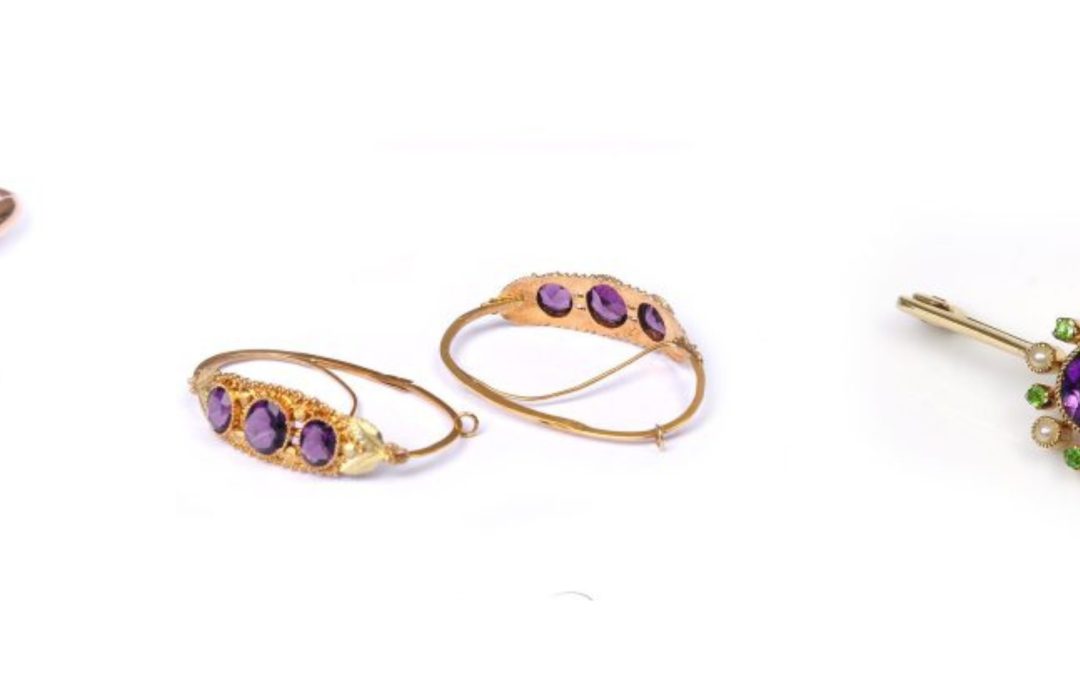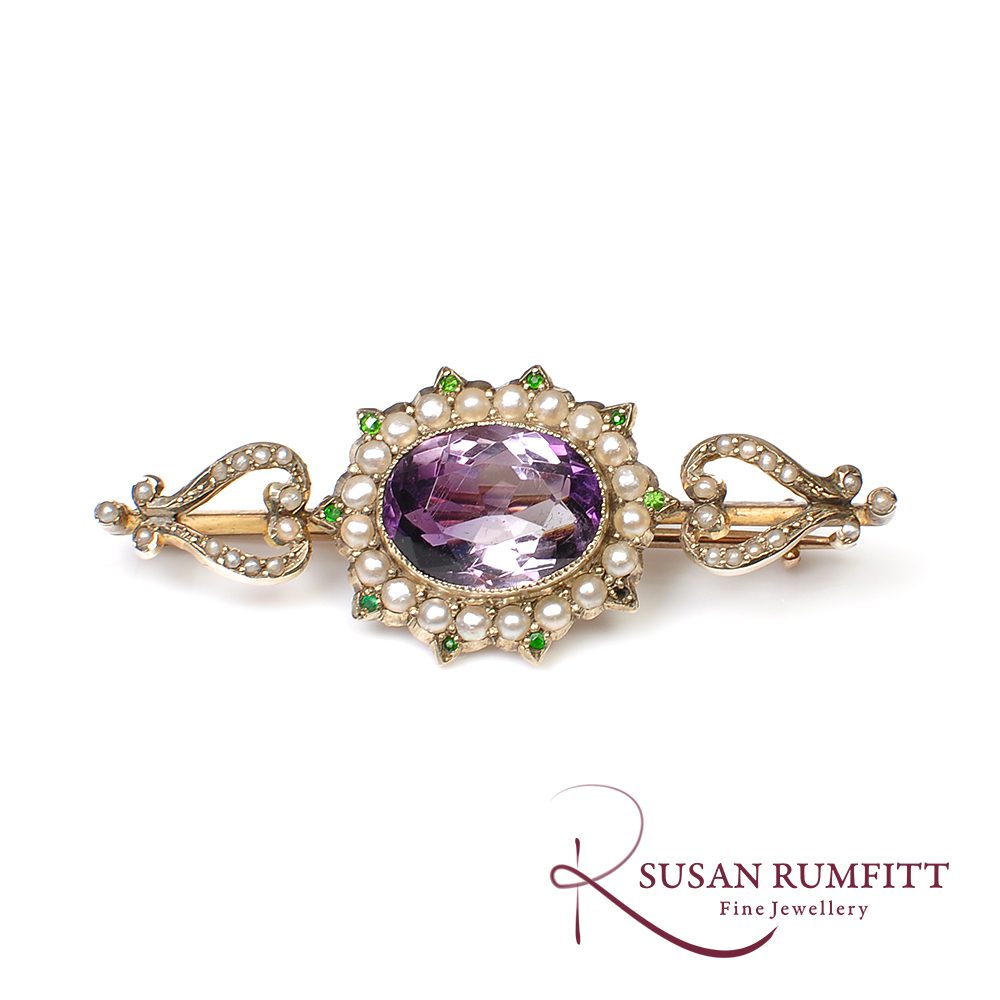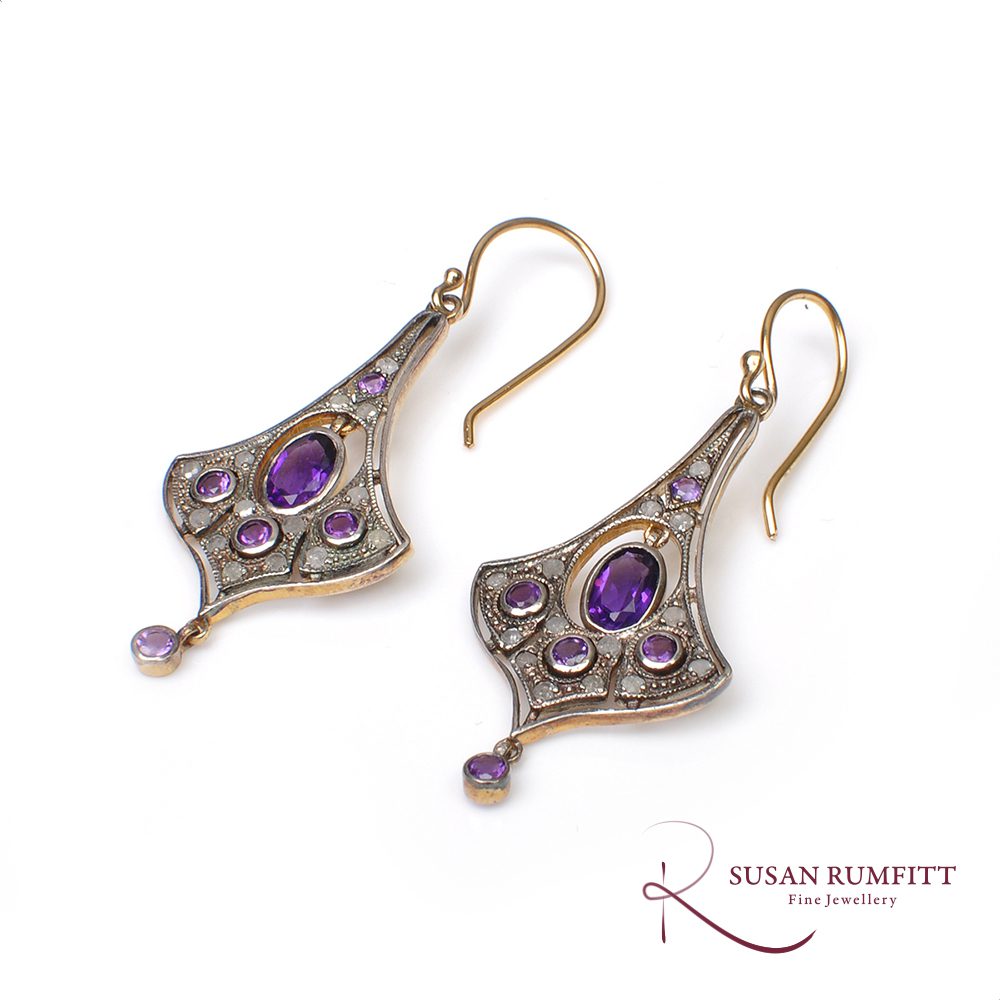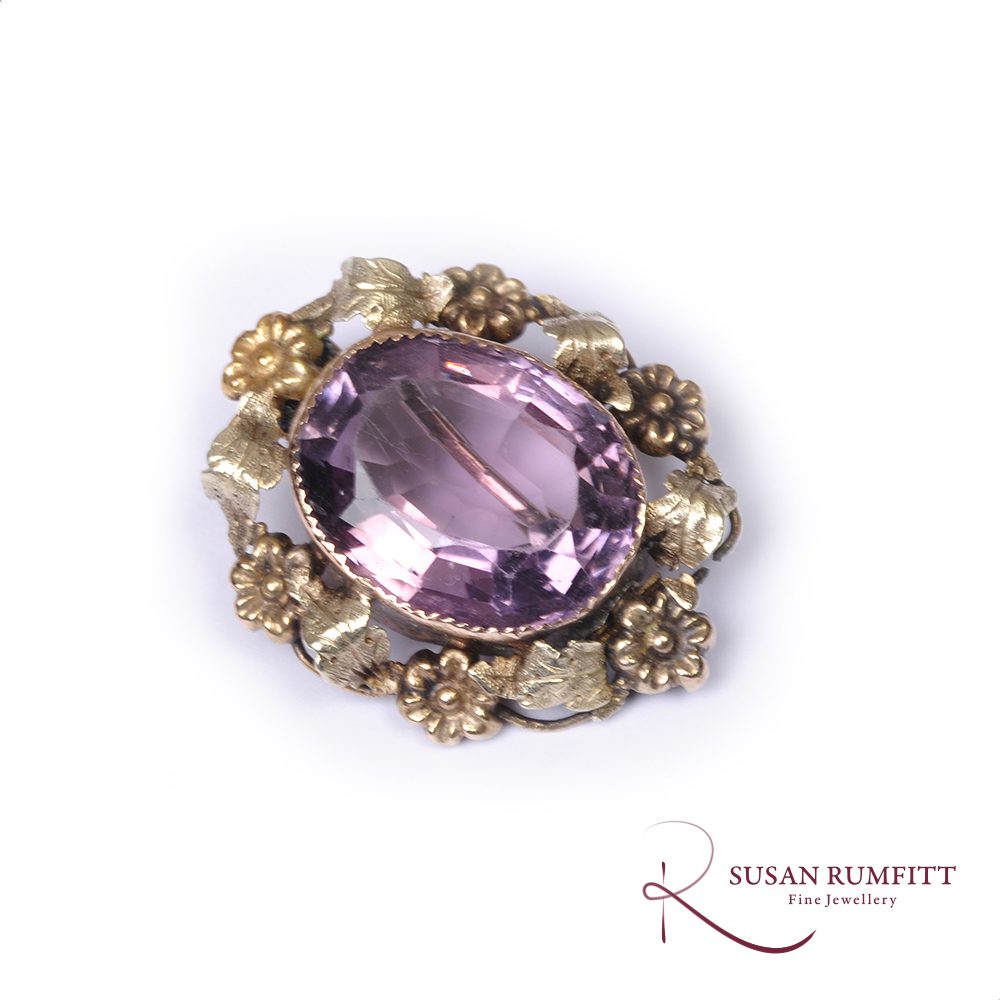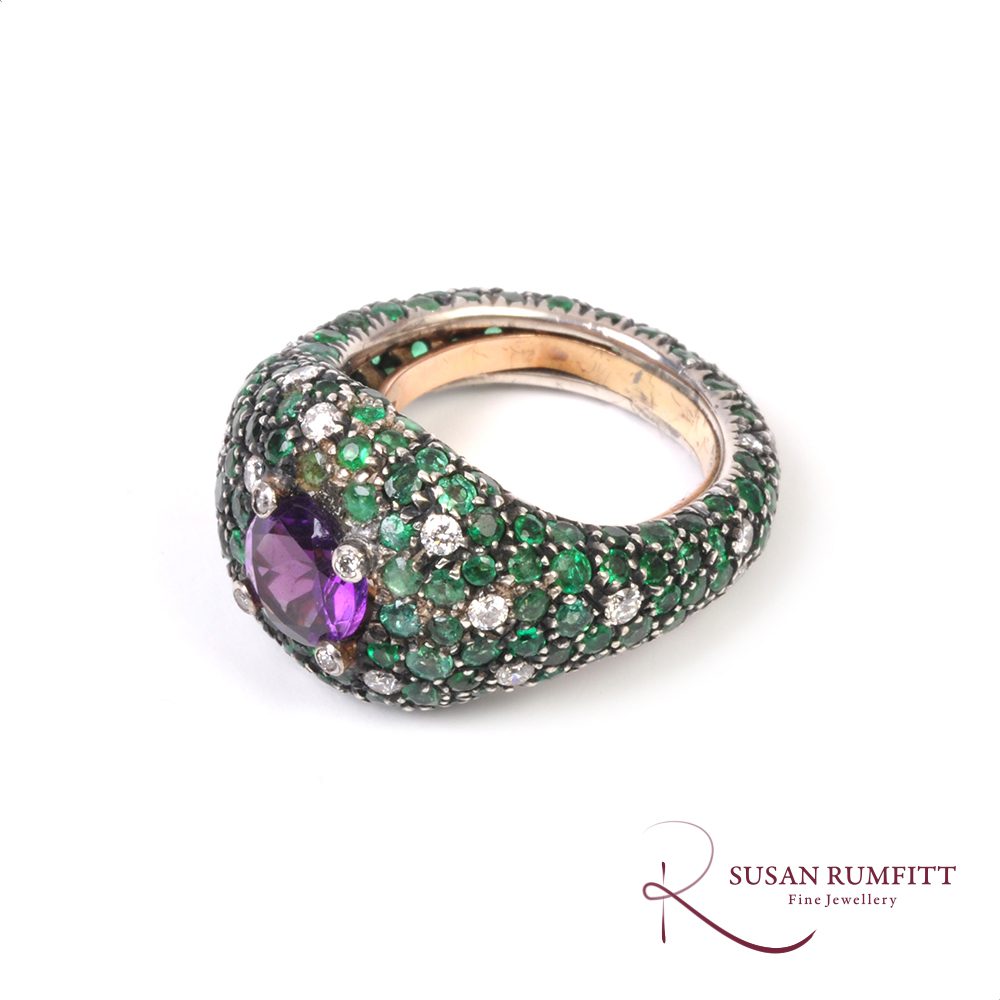The beautiful pale lilac to rich purple variety of quartz known as amethyst is February’s birthstone, but it may surprise you to know that amethysts used to be considered as valuable as ruby and emeralds. Primarily mined in Siberia and Saxony (now Germany), amethysts with a deep colour were rare and highly prized for their purple colour and its associations with wealth, power and royalty since the time of the Romans.
Amethyst meaning
Although the Romans cherished amethyst, the name comes from the Greek words for ‘not drunk’ as they associated it with the god Dionysus and believed that it held the power to keep a clear head and aid judgement. Indeed, the Egyptians also connected amethyst with sobriety; Cleopatra was said to have an amethyst ring carved with the goddess of drunkenness Methe, perhaps symbolising that on the hand of the queen, even a goddess should be sober.
The association with sobriety continued into the middle ages when a bishop’s episcopal ring, originally a symbol of his ‘marriage’ or fidelity to the church, began to be set with amethysts, a tradition that continues to this day. The amethyst signified both the bishop’s power, and his responsibility not to become drunk with this power.
Siberian amethysts
The finest amethysts, with the deepest richest colour, have traditionally come from Siberia, and high-quality amethysts are sometimes still called ‘Siberian amethysts’, irrespective of their actual origin. Catherine the Great, an avid jewellery collector, took full advantage of the high quality deposits in her country and had some of the most wonderful amethyst jewellery. Unfortunately, little of it remains, as a large majority was sold after the revolution.
However, the Russian Imperial family continued to have a close link with the rare and beautiful Siberian amethysts. Catherine’s grandson, Tzar Alexander I, was so much taken by a portrait of the Marchioness of Londonderry that he sent her 14 exceptional Siberian amethysts as a token of his affection. They were said to have developed an intimate relationship which was “innocent of guilt”, but certainly involved many lavish gifts from the tzar. The marchioness later had the amethysts made into an impressive tiara which is now on permanent loan to the V&A Museum.
Amethyst discoveries
At around this time huge amethyst deposits were discovered in Brazil and many of the royal families were acquiring this unusual and symbolically coloured gem for their jewellery. We can see some truly exceptional amethyst and diamond pieces including a tiara now in the Swedish royal family that belonged to Empress Josephine of France, a parure made for Queen Victoria’s mother, and later excellent examples worn by Queen Alexandra and Queen Mary.
Although by Victorian times the most lavish examples of amethyst jewellery were still being worn by the aristocracy as rivières and tiaras, the middle classes also eagerly embraced the opportunity to wear this previously rare gemstone. Much like garnets, they were worn as large cabochons and inset with diamond and pearls in star-shaped settings, or as large faceted gems surrounded by pearls. They also featured extensively in suffragette jewellery which used green, white and violet to symbolise the slogan ‘Give Women Votes’.
Later history and present day
By the turn of the century amethyst was no longer considered such a precious gem, but exactly because of this, it was eagerly taken up by the Art Nouveau and Arts and Crafts movements. With the ethos that design and craftsmanship are more important than expensive materials in the search of beauty, amethyst was a perfect material.
Today amethyst can be found in a range of qualities and corresponding price ranges, and can even be made synthetically. However, few people would deny that whatever the price, amethyst can be truly beautiful.
Amethysts at Susan Rumfitt Fine Jewellery
Our Harrogate gallery features a wonderful selection of pieces featuring amethyst, February’s birthstone, including:
